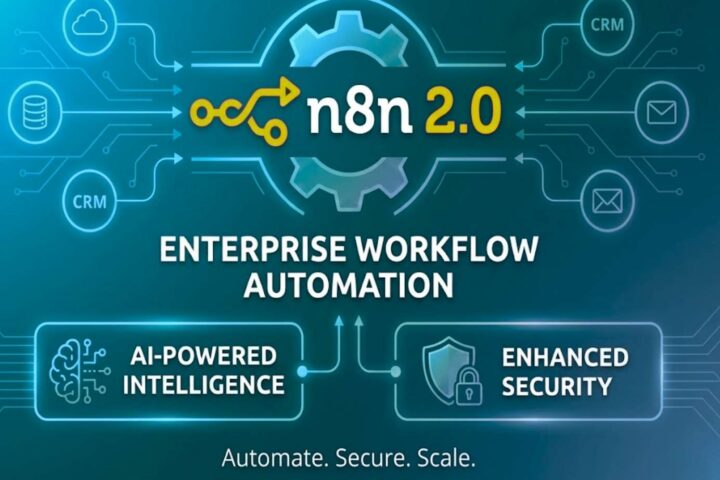Automation is one of the key tools contributing to productive work aligned with the guidelines of Agile methodology, which emphasizes the importance of continuous and thorough testing. While automation software undeniably adds significant value to Agile teams, maximizing its benefits requires a well-planned approach to the test automation project. This article will provide you with useful recommendations on adopting Microsoft automation testing tools, both those offered by Microsoft, such as the Regression Suite Automation Tool (RSAT), and those from third parties dedicated to Microsoft’s products, such as Executive Automats.
Selecting the right tool
The choice of the best test automation tool depends on numerous factors. However, the requirements of the software you want to test should be considered the most crucial criterion. First and foremost, your test automation tool should support the software you want to test and the types of tests you need to run.
If you are looking specifically for tools designed by Microsoft, you have a choice between products aimed at testing specific applications, such as RSAT for Microsoft Dynamics 365 finance and supply chain management software, and other solutions that can be adapted to various products, including Azure Test Plans and a set of robust testing tools provided by Visual Studio.
Alternatively, a wide choice of third-party tools can be effectively used for testing Microsoft’s products. For example, Executive Automats has been developed for testing not only the Finance and Supply Chain Management applications of Microsoft Dynamics 365 but the entire suite.
Automating additional tasks
By choosing the right tool, you will be able to automate not only the process of test execution but also additional activities without a need to customize your test automation product or look for more solutions to integrate with your testing infrastructure. Among these tasks are:
- Reporting and analytics;
- Generation of test cases, test scripts, and test data;
- Parallel testing across different environments, including browsers and devices;
- Defect tracking.
Even if your test automation product does not allow you to leverage extended automation, it may be worth investing in broader automation as this will significantly reduce the amount of time spent on continuous testing.
Leveraging scalability
Automation has strong potential for handling a much larger number of test cases than manual testing. As mentioned earlier, parallel testing is a powerful feature of test automation tools that can help you increase test coverage. However, this is just one way to maximize the benefits of your test automation tool.
Plan more testing
With a test automation tool, you can schedule tests to run without human supervision. This means you do not have to limit test execution to working hours. Your tool can continue running tests overnight and on weekends.
Employ no-code solutions
Depending on the software you want to test, the availability of no-code solutions may be limited, but such tools can streamline the testing process. One of the most time-consuming aspects of automated testing is creating test scripts, and a no-code interface can significantly reduce the effort required from your team. Additionally, user-friendly no-code solutions like Executive Automats can be used by individuals without advanced technical knowledge, reducing your team’s dependency on professional testers.
Create reusable and easily maintainable test cases
Since test automation still relies significantly on the manual creation of test scripts, it is virtually impossible to test every possible scenario. However, with an appropriate approach to developing test cases and scripts, you can make it easier for your team to reuse and modify existing test cases to increase test coverage. Consider these techniques:
- Modular test design based on breaking down test cases into smaller functions;
- Data-driven testing, which separates test logic from data;
- Abstraction of repeated functions across different test scripts, including setup or teardown functions;
- Test parameterization for running tests with the same logic but different data.
Reusable test cases not only minimize the work required to create new test cases but also significantly simplify their maintenance.
Make the most of Agile practices with your test automation tool
With automation, Agile teams can enhance fundamental approaches such as continuous feedback loops, test-driven development (TDD), and behavior-driven development (BDD).
By integrating automated tests into CI/CD pipelines, automating reporting, and adopting short iterations, Agile teams can ensure continuous feedback loops, essential for early defect detection and improved collaboration. TDD, incorporating the practice of writing tests before code and creating the code that will subsequently pass these tests, can be simplified by automation due to the capability of frequent test execution, which facilitates such development. Meanwhile, tools for automated acceptance testing can convert test scenarios written in the Given-When-Then format known as Gherkin language, which is part of BDD practice.
Streamlined testing of Microsoft Dynamics 365 with Executive Automats
Agile teams working with Microsoft Dynamics 365, whether engaged in developing customizations and related products for integration or using this ERP and CRM system for increased productivity, can benefit from Executive Automats. This tool offers exceptional user-friendliness, a high level of automation, and diverse functionality covering functional, unit, and performance testing. As mentioned earlier, it can be implemented for testing the entire ERP and CRM suite.
Yet, regardless of the tool you choose, aligning your testing routine with the best practices discussed in this article will help your Agile team fully harness the potential of automation.
















